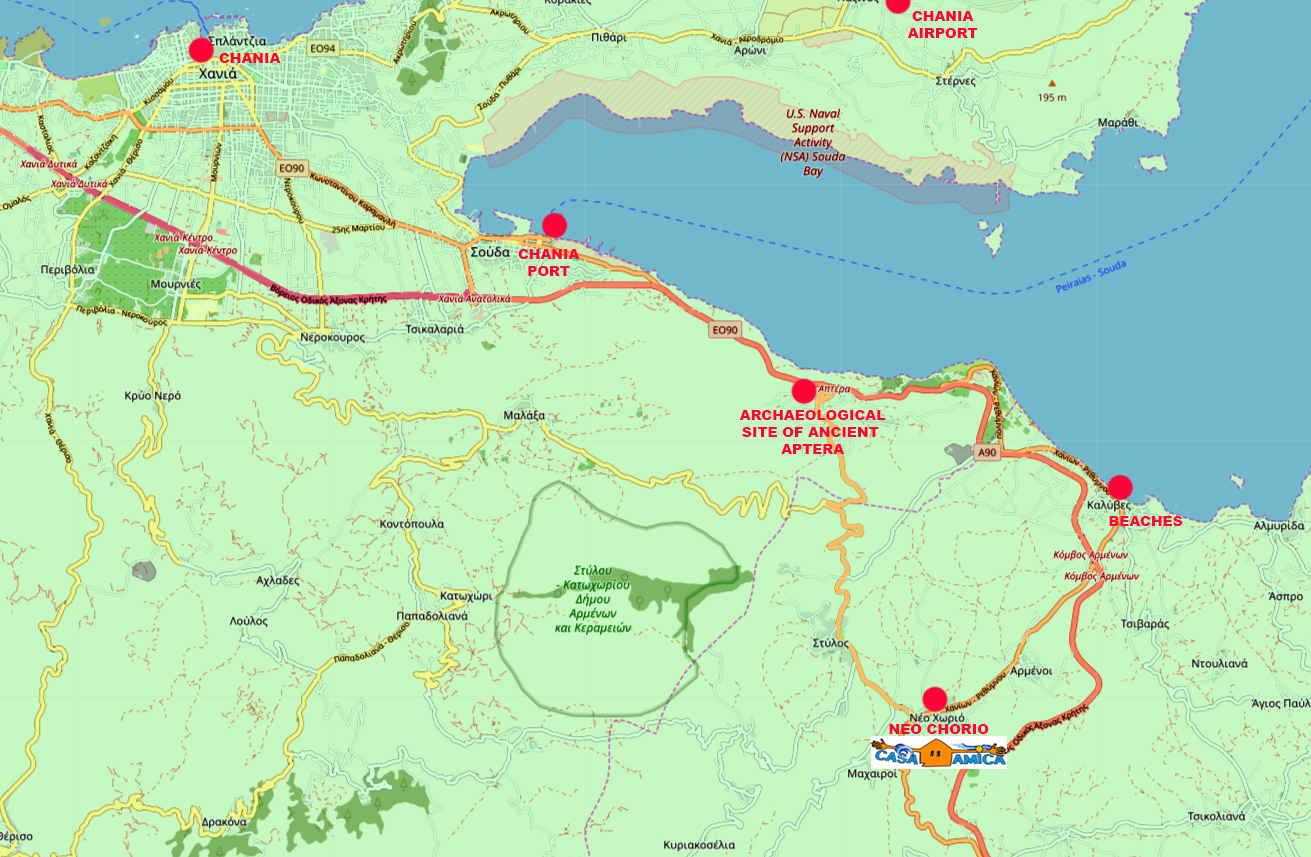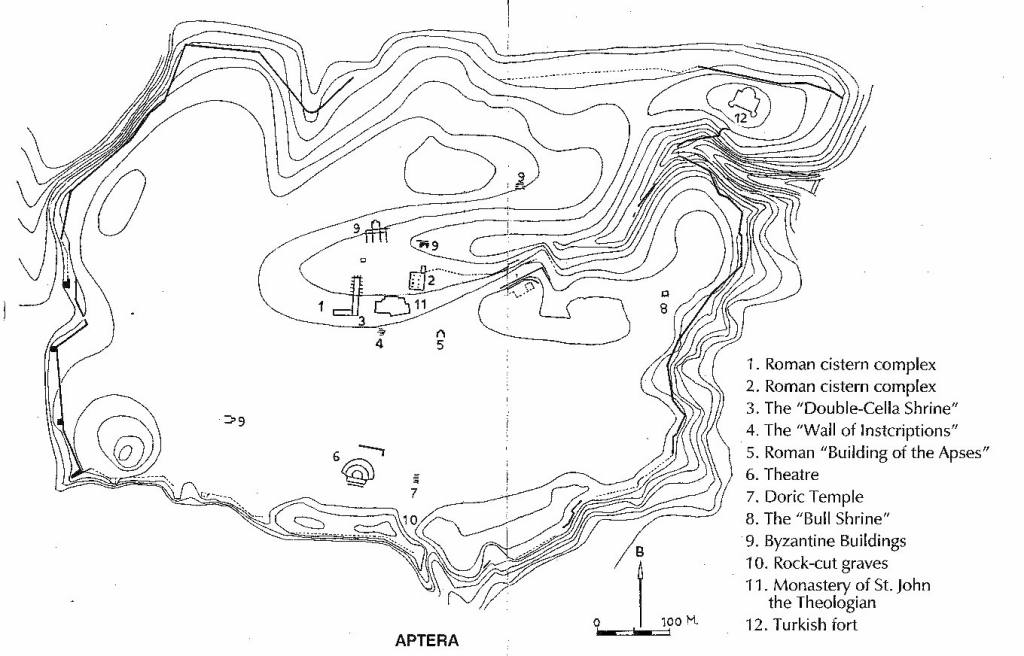
The island of Crete has always been the top destination, being the largest and most popular of the islands of Greece. Crete is also the birthplace of a number of highly regarded civilizations, the most notable of which are the Minoan and the Apterian civilizations which flourished before the time of the invasion of Rome and the Byzantine Empire.
FROM CHANIA TOWARDS RETHIMNO: APTERA
The Ancient City of APTERA is just about half an hour from CHANIA center in the Western Region of Crete, on the other side of the Souda Gulf, arriving from CHANIA AIRPORT. It overlooks the entrance to the great harbour of SOUDA (Chania ferry boat port), where Paleokastro fort was built by the Venetians, aimed to protect the Souda Bay from possible attacks or invasions, near the village of Megala Chorafia.
The walls of Paleokastro Fort, which were oriented from north to south in some places were 1.5 m wide, 3 m high and were equipped with arched tanks. A wide road connected Paleokastro to the sea.
The space inside the city walls of Aptera was so vast that it is hard to imagine the enormous scale of the city. From the sheer size of the city it is obvious that in times of war, the walled city was used as a refuge by farmers and other citizens living outside the city walls. It was also a religious and administrative centre as well as a place for celebrations and social gatherings.

The enclosed area is only a small part of the very large site which covers the whole hill. Surrounded by massive fortification walls (with total circumference of 3.5 km) most of the area is still not excavated but lots of work has been done on the western gate. To the North of the hill a large Ottoman fort overlooks the whole of Souda Bay.
Furthermore all of those who have made a study of Aptera confirm that it was one of the great commercial and shipping centres of Crete, mostly due to its favourable location near the harbour of Souda. Aptera was also an industrial city as together with fine finger paintings both iron and bronze forges were discovered very close to the ancient mine of Verekinthos (today Malaxa), the oldest mine in Europe.
The name ‘Aptera’, according to one tradition, derives from Apteron, king of Crete, son of Kydon and father of Lappios, who is said to have lived in the time of Moses around 1800 BC. The legend of Apteron lends itself to the suggestion that the city was once a colonial settlement governed by the Dorian Apteros or Aptaros who took part in the occupation of Crete towards the end of the Minoan era.
Within the site you can visit impressive Roman cisterns, ruins of Roman bath houses, a newly excavated theater and the monastery of Agios Ioannis Theologos in which there is an excellent presentation of the site of Aptera.
The archaeological site of Ancient Aptera is visited by many tourists every year and its ruins are reminiscent of the past splendour and power of the city. In the area, dominate the vaulted Roman cisterns, which are still kept in very good condition.
FROM APTERA TOWARDS APOKORONAS
The position of the ancient Aptera is one of the most impressive in Crete, situated high on a level plateau with a fantastic panoramic view. In all directions there is rare beauty to meet the eye, the Cretan sea, the valley of Apokoronas which is exceptionally beautiful, the Akrotiri, the high White Mountains and Malaxa are all to be seen.
From Aptera (Megala Chorafia) southwards, along the internal old route, near the village of STYLOS, lies the Gorge of Dyktamos, a popular hiking destination and the church of Panagia Serviotissa in the monastery of Agios Ioannis among the orange groves: one of the best examples of Byzantine architecture in Crete. It was built in the middle of the second Byzantine period, the twelfth century, and shows influences of previously developed new forms of church architecture which originated in Constantinople.
From Stylos to the village of NEO CHORIO it is just about 2 km and 2 more km divide it from Armeni, rich in tavernas, on the old road to Rethymnon and just 4 km from KALYVES.
Between Armeni and Kalyves is the insertion to the main Cretan road, the so-called “highway” that connects all northern centres and allows you to reach most of Cretan touristic destinations within a one day trip.
The village and coastal resort of Kalyves, the ancient fortress of Apicorno, has numerous shops, a large supermarket, pharmacies, petrol stations, a bank, ATM’s, tavernas, cafes, and three beaches: West of Kalyves at the Koiliaris River is the tranquil beach of Kyani Akti; in the village, to the west side of the Xydas River you will find the beach of Xydas, between the small harbour and the East side of the Xydas River is the Mistrali Beach.
The road that connect Aptera, Stylos, Neo Chorio and Kalyves is like a natural theatre onto the sea and around the estuary of river Koiliaris, Mesopotamos and Xydas.
